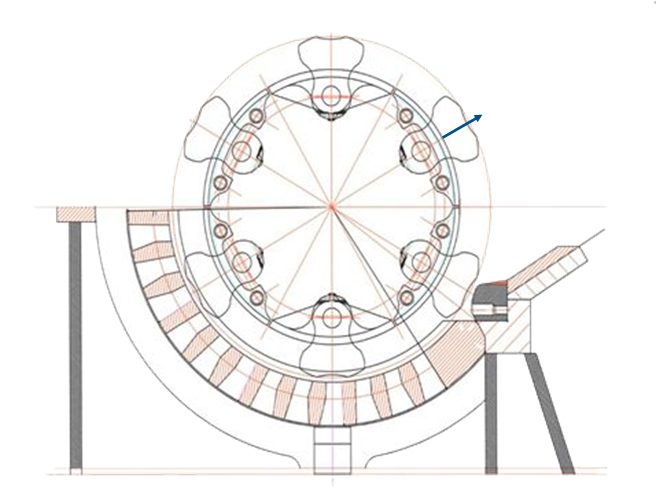Depending on the shredder frame size and driving power in combination with the hammer weight the static load of a hammer in rotation can be calculated.
The rotor calculator needs the following input:
- rotor diameter
- rotor rpm
- hammer weight
It then calculates:
- the speed of your hammers on the rotor in operation
- the centrifugal force caused by hammer mass and rotation that is pulling at the hammer pin (FRot)
- the kinetic energy the hammer uses for shredding, caused by hammer mass and hammer speed (impact energy)
By filling in Machine 1 and Machine 2 you can directly compare the results of rpm changes to your process.

| Machine 1: | |||||
| Rotor | d [m]: | r [m] = 0 | r [in] = 0 | ||
| rpm [1/min]: | rps [1/s] = 0 | ||||
| Hammer | m [kg]: | = 0 lb | |||
| v [m/s] | = 0 m/s | = 0 km/h | = 0 mph | ||
| FRot | = 0 kN | = 0 t | = 0 lb | ||
| Ekin | = 0 kJ | ||||
| Machine 2: | |||||
| Rotor | d [m]: | r [m] = 0 | r [in] = 0 | ||
| rpm [1/min]: | rps [1/s] = 0 | ||||
| Hammer | m [kg]: | = 0 lb | |||
| v [m/s] | = 0 m/s | = 0 km/h | = 0 mph | ||
| FRot | = 0 kN | = 0 t | = 0 lb | ||
| Ekin | = 0 kJ | ||||
A car weighing 2.0 metric tons (4,409 lb) driving 50 km/h (31 mph) has 1.2 kJ impact energy.




